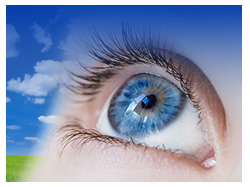 Dr. Siddhartha Ghosh
Dr. Siddhartha Ghosh
Consultant Ophthalmologist (MBBS, MS)
Generally, it's advisable to have the eyes check-up once annually. This is particularly important for preschool children as high myopia, hypermetropia or astigmatism can lead to strabismus (squint) or amblyopia (lazy eye), which can be prevented if detected and corrected early before a child is 6 years old.
If you are over 6 years old and without any symptom on performing visual tasks, it's all right to put on your spectacle whenever you need it. However, it's rather dangerous when you are driving or carry out certain activities with poor vision. If you are under 6 years old, it's advisable to wear the spectacle constantly, unless your refractive error is mild.
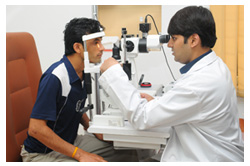
Your practitioner is trained to prescribe the appropriate correction which meets your daily visual needs best. Different people have different visual needs and different tolerance to the correction.
In most cases, full correction is prescribed for best comfortable vision. For certain cases, the correction may be deliberately under corrected to aid tolerance, and then gradually strengthened over a period of months, if desired. Your practitioner may also prescribe slightly under powered (myopic) correction if your activities involved mainly near works.
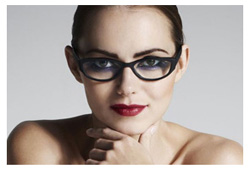
The human crystalline lens is a clear, flexible substance in the normal eye. It is situated just behind the pupil and constitute one of the main elements that focus incident light onto the retina.
A cataract means the clouding or opacification of the crystalline lens which in most cases is due to aging. When a cataract is formed, the incident light become scattered or blocked, causing blur images on the retina hence poor vision.
In early stage, cataract often accompanied with a myopic shift (an increase in myopia or decrease in hypermetropia) which also result poor vision, but vision may be improved for a period of time by fitting with appropriate spectacle correction. However, the best result is through surgery removal of the clouding lens and implant an IOL (intra-ocular lens).
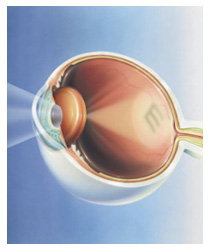
No, there is no evidence that working at a computer damages the eyes. However, long hours of work can be fatiguing to the eyes, neck and back. Monitor glare from various light sources can also be a problem. It is often helpful to take periodic breaks, looking off in the distance and adjusting your work station (angle of the monitor, height of the chair, changing the lighting, etc.).
No, there is no scientific evidence that TV sets emit rays that are harmful to the eyes.
The ability to focus on near objects decreases steadily with age and is referred to as presbyopia. Presbyopia is a natural aging of the lens. It is usually near the age of 40, when glasses or bifocals are prescribed to correct this condition.

There is a benefit to wearing UV protective lenses--wearing them may protect against cataract formation. Clear lenses with UV protection may offer greater protection than dark lenses because they allow the eyes to be exposed to more light. This causes greater constriction of the pupil which lets less light enter the eyes.

Possibly. If both the biological parents wear glasses, your children are likely to need them as well.
No, but most people are more comfortable reading with proper lighting which is bright enough to provide good illumination but not so bright as to cause glare.
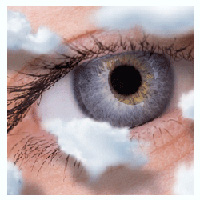
There is no predetermined schedule for changing glasses or contacts. It is necessary to change your prescription only when it no longer provide adequate correction. However, it is still a good idea to have regular eye examinations.
Some of the newest materials for frames include titanium (virtually indestructible) and polycarbonate materials (recommended for high impact sports). Lenses are also made from polycarbonate materials, other types of light weight plastics and glass. Coatings include UV protection (recommended for all types of lenses), scratch-resistant protection, polarization, anti-glare and others.
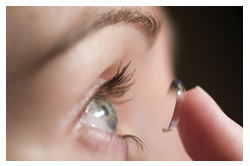
Yes, contact lenses provide excellent vision for most sports. However, they do not protect the eyes from injury. Therefore, contact lens wearers should use polycarbonate sports safety goggles or glasses when participating in sports. Also see information about preventing eye injuries.
No, there is no evidence that wearing contact lenses improves vision or prevents myopia from getting worse.
No, because it does not provide the specifications for lens diameter, thickness and base curve. A new prescription must be carefully fitted by an eye care specialist to avoid serious adverse reactions.
Using commercial saline solutions is the safest method of cleaning lenses. Some studies have shown that homemade solutions may lead to corneal infections. Also see information about contact lenses.

The medical term for nearsightedness is myopia, correctable with glasses, contact lenses or, in some cases, refractive surgery (LASIK or Corneal Ring Implants). The medical term for farsightedness is hyperopia, correctable with glasses, contact lenses or, in some cases, refractive surgery. Related conditions (also correctable with glasses or contact lenses) include astigmatism and presbyopia.
Acuity is the measure of the eye's ability to distinguish the smallest identifiable letter or symbol, its details and shape, usually at a distance of 20 feet. This measurement is usually given in a fraction. The top number refers to the testing distance measured in feet and the bottom number is the distance from which a normal eye should see the letter or shape. So, perfect vision is 20/20. If your vision is 20/60, that means what you can see at a distance of 20 feet, someone with perfect vision can see at a distance of 60 feet.
You are legally blind when the best corrected central acuity is less than 20/200 (perfect visual acuity is 20/20) in your better eye, or your side vision is narrowed to 20 degrees or less in your better eye. Even if you are legally blind, you may still have some useful vision. If you are legally blind, you may qualify for certain government benefits.
If neither of your eyes can see better than 20/60 without improvement from glasses or contacts, you may be defined as visually impaired. In addition, poor night vision, limited side vision, double vision and loss of vision in one eye may also determine visual impairment.
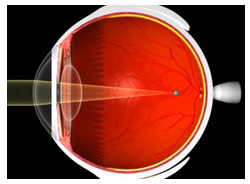
Low vision is a term describing a level of vision below normal (20/70 or worse) that cannot be corrected with conventional glasses. Low vision is not the same as blindness. People with low vision can use their sight. However, low vision may interfere with the performance of daily activities, such as reading or driving.
No. Currently, there is no way to transplant a whole eye. However, corneas have been successfully transplanted for many years.
Newborn infants are able to see, but as they use their eyes during the first months of life, vision improves. During early childhood years, the visual system changes quickly and vision continues to develop. If a child cannot use his or her eyes normally, vision does not develop properly and may even decrease. After the first nine years of life, the visual system is usually fully developed and usually cannot be changed.
The development of equal vision in both eyes is necessary for normal vision. Many occupations are not open to people who have good vision in one eye only. If the vision in one eye should be lost later in life from an accident or illness, it is essential that the other eye have normal vision. Without normal vision in at least one eye, a person is visually impaired.
When you take a picture, the lens in the front of the camera allows light through and focuses that light on the film that covers the back inside wall of the camera. When the light hits the film, a picture is taken. The eye works in much the same way. The front parts of the eye (the cornea, pupil and lens) are clear and allow light to pass through. The light also passes through the large space in the center of the eye called the vitreous cavity. The vitreous cavity is filled with a clear, jelly-like substance called the vitreous or vitreous gel. The light is focused by the cornea and the lens onto a thin layer of tissue called the retina, which covers the back inside wall of the eye. The retina is like the film in a camera. It is the seeing tissue of the eye. When the focused light hits the retina, a picture is taken. Messages about this picture are sent to the brain through the optic nerve.
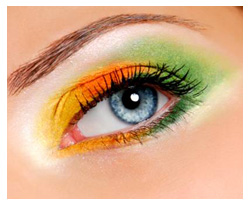
In this part of the world, myopia is the most common refractive error especially among the school children and young adults. The cause of the development of myopia is not fully understood. It is generally believed that the predominant causative factor is environmental rather than genetic, and it's closely related to the urbanized lifestyles which involved excessive near visual tasks.
There is no single effective way to achieve this goal. As mentioned above, myopia is a condition with multiple causative factors, and very little can do to influence the myopic gene. Besides prevent to over stress your eyes, wearing Rigid Contact Lenses appears to be effective to retard the progression of myopia. Wearing bifocal, progressive power lenses, or atropine eye drops is also effective in reducing progression of myopia in some children. There are several myopic-control products available in the market, unfortunately, they are not scientifically proven to be effective.
This is a condition of the eye unable to see under reduced illumination. Lack of Vitamin A is the most common cause of this condition in the poor countries. Some eye diseases affecting the rod shape cells in the retina also result night blindness. Congenital night blindness is rare.
This is a condition of the eye which cannot see well at long distances in low illumination, such as driving at night. It's a myopic condition induced from complex optical factors as a result of dilatation of the pupil and reaction in the focusing mechanism of the eye. This problem can be alleviated by appropriately increased the correcting power to be used in the low illumination.
